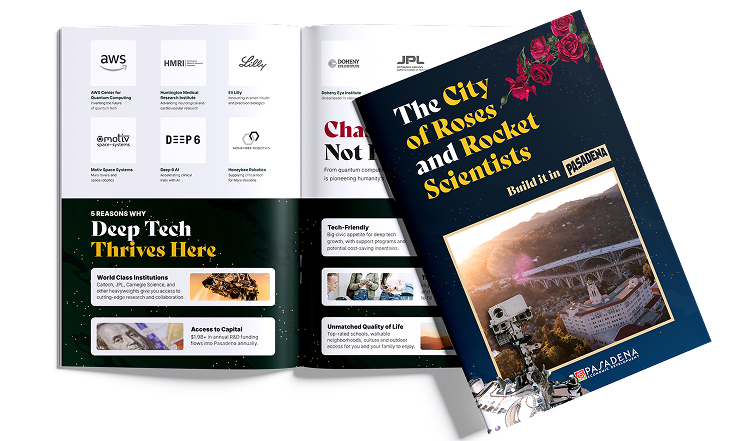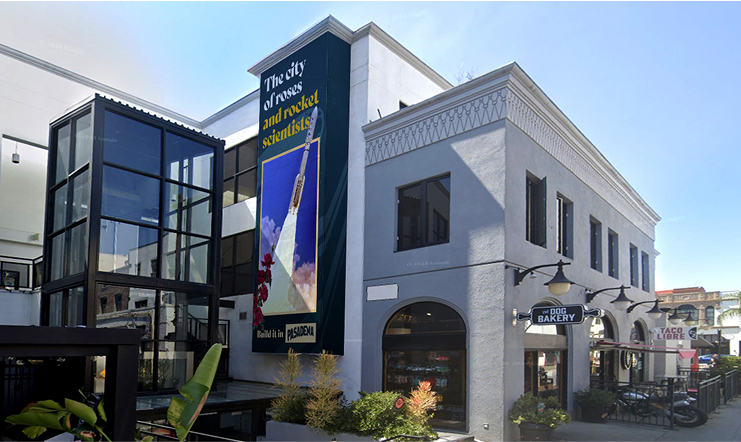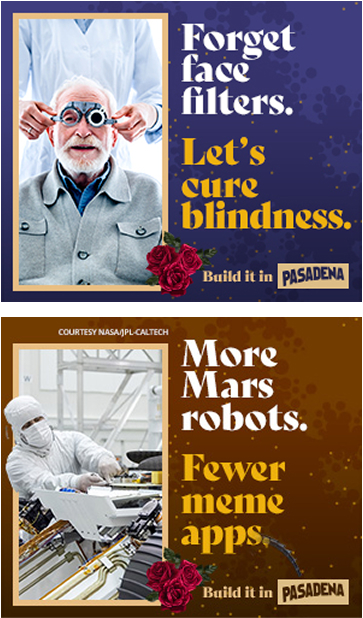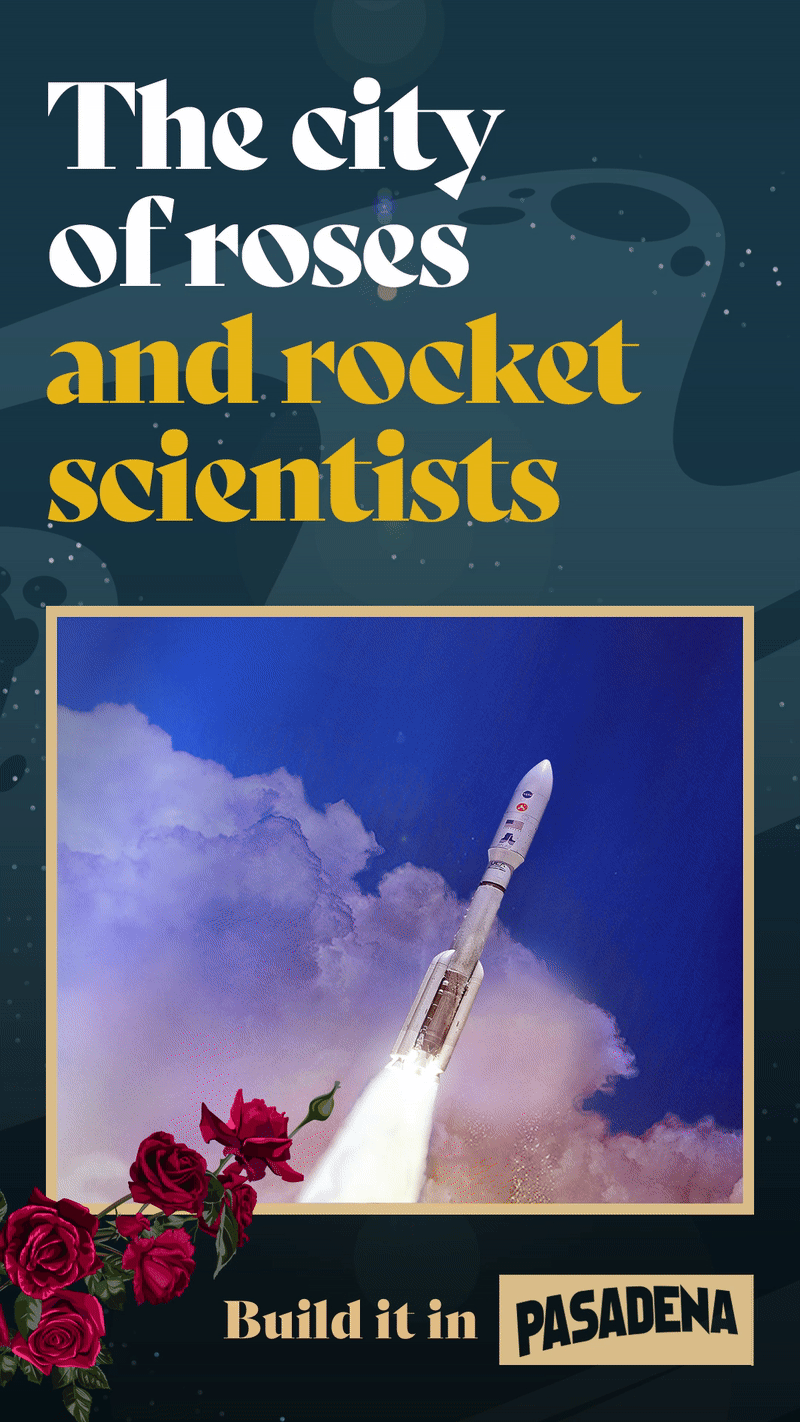Why Civic Marketing Deserves More Than Awareness
Civic and government agencies do important work: building communities, supporting businesses, improving quality of life … not to mention making sure that the water runs and the toilets flush.
But too often, the way those stories get told falls short. Messaging gets watered down. Campaigns lean on tired slogans. And marketing ends up being seen as a checkbox, not a driver of real results. At Echo-Factory, we believe government marketing can do more, and should. Whether you’re trying to attract new employers, build public trust, or promote your city’s role in innovation, the right campaign can shift public perception and support long-term goals. But too often, the way those stories get told falls short. Messaging gets watered down. Campaigns lean
That’s what we set out to do with the City of Pasadena’s economic development division recently. And along the way, we developed a civic marketing model that other cities and government organizations can use: one built around strategy, strong creative, smart media and PR campaigns, and measurable success. In this post, we’ll break down how it worked, and how your city, county, state, or even national government organization can apply the same approach.
Echo-Factory's Civic Marketing Model
Strategy: Start with Stakeholder Insights, and Ground It in Authenticity
Too many civic campaigns start with assumptions: what leaders think people care about, or what other cities say they’re doing. The result? Generic messaging, forgettable slogans, and a missed opportunity to stand out.
We take a different approach. We listen first.
For Pasadena’s economic development team, we began by talking to the people who shape the city’s innovation ecosystem every day. We interviewed deep tech CEOs, researchers from Caltech and JPL, economic development leaders, city officials, and members of the broader community.
We also did our homework – digging into data, company milestones, and tech sector trends – to see what was actually happening on the ground.
What we uncovered was not only encouraging – it was also rare.
Pasadena wasn’t just aspiring to be innovative; it already was. But not in the way most cities market themselves. This wasn’t another pitch to be “the next Silicon Valley.” Pasadena’s innovation story was deeper, more meaningful, and uniquely its own.
This is a city solving the hard problems: curing blindness, sending robots to Mars, exploring the edges of quantum science … but, until now, those stories hadn’t been told at scale. The city was still known more for its parades and restaurants than its world-changing research.
That disconnect gave us our strategy: Tell the story that’s already true, and make it visible to the people who need to see it.
Instead of trying to invent a brand, we helped the city claim one it had already earned. That authenticity became the foundation for a campaign that resonated – with residents, with the tech world, and with the broader public.

Creative That Pushes Boundaries and Speaks the City's Truth
With a strong, authentic story in place, we set out to create a campaign that felt as ambitious and original as the city it represented.
We didn’t want generic civic messaging; we wanted something that could stand shoulder to shoulder with leading tech brands, while still feeling unmistakably Pasadena. The result was a campaign that broke visual and verbal conventions, especially within the public sector.
At the center of it all was a bold, unifying concept: “The City of Futures, Not Fads.”
This wasn’t just a line – it was the big idea that grounded every creative decision. It captured the truth that Pasadena isn’t chasing the next social media app; it’s enabling the next leap in science and engineering.
We built the campaign around this platform with a series of smart, visually striking ads that paired modern civic branding with a little edge:
- “Forget face filters. Let’s cure blindness.”
- “More Mars robots. Fewer meme apps.”
- “Stop chasing trends. Start creating futures.”
- “The city of Roses and Rocket scientists.”
The design language was just as intentional: deep colors, bold typography, editorial imagery, and a rose motif that was a nod to the city’s iconic heritage while signaling something new. Every piece of creative was crafted to feel technical but human, sophisticated but accessible.
Importantly, we didn’t abandon civic identity – we evolved it. The creative worked within accessibility standards and brand guardrails while pushing past the visual sameness that so often defines government campaigns. The result felt both authentic to Pasadena and distinct from any other city trying to brand itself as “innovative.”
This wasn’t just a rebrand. It was a repositioning with creative that made people stop, think, and see the city differently

Smart Structure, Real Results: a Campaign Built to Deliver on Civic Goals
Repositioning Pasadena as a hub for deep tech wasn’t just about building pride. It was about driving action, specifically, attracting companies and founders who could help grow the city’s innovation economy.
To do that, we built a campaign structure designed to reach the right audience: CEOs, investors, and decision-makers in Southern California’s other tech-forward cities. These were people who already understood innovation, and who might be open to moving their companies somewhere with stronger research roots, better quality of life, and real support for big ideas.
We launched a $30K media test with a focused, intentional strategy:
- Out-of-home and digital ads placed in Irvine, El Segundo, DTLA, Burbank Airport, and LAX, areas where deep tech leaders live, work, and travel.
- Geo-targeted display and programmatic ads ensured we followed up with decision-makers on their devices, reinforcing the message beyond a single touchpoint.
- We supplemented the campaign with city-owned inventory like bus shelters, extending visibility across Pasadena itself, without adding significant cost.
It wasn’t just a visibility play. It was a testable, measurable launch.
Through a brand lift study, we tracked real changes in perception, by geography, frequency, and message type:
- 33.9% absolute lift and 103.6% relative lift on the top-performing creative
- 67.25% lift in perception among high-frequency viewers
- Strongest results in innovation-forward ZIP codes, confirming our targeting approach
This early data didn’t just prove the concept; it shaped the campaign’s next phase: a broader rollout, expanded targeting, and deeper saturation in high-performing markets.
When civic campaigns are built strategically, with a clear goal and smart delivery, they don’t just tell a story – they move a city forward.


What Civic Marketers Can Take Away
The Pasadena campaign wasn’t just a one-off success. It was a test case for how government marketing can actually work; shifting public perception, supporting economic development, and delivering real, measurable results.
Here are four principles civic marketers can apply, whether you’re working with a tourism board, transit authority, economic development agency, public utility, health department, or other agency.
Start With What’s Real, Then Build From There
Skip the “next Silicon Valley” claims. Look at what makes your city, state, county, or region different, not just what you wish it were. Authenticity isn’t a limitation; it’s a competitive advantage. Pasadena didn’t invent an identity – it claimed the one it had already earned. That’s what made the campaign resonate.
Be Willing to Push Creative Boundaries
Government marketing doesn’t have to be boring, and honestly, it shouldn’t be. If you want to compete for attention alongside global brands, startup culture, and influencer noise, you need creative that breaks through. That means ditching the templates and embracing storytelling that’s smart, specific, and bold.
Target the Right People in the Right Places
We didn’t just run ads in Pasadena; we placed them where deep tech CEOs and investors were already working and flying: El Segundo, Irvine, Burbank Airport, DTLA, and LAX. Your audience is rarely just your residents. Civic campaigns should think like growth marketers, targeting the people who can move your community forward.
We were also realistic: While it would be great to get a biotech CEO to relocate their company from Boston to Pasadena, we didn’t shoot for that from the very beginning. We started regional, and are working with the city over time to expand their messaging to other parts of the country.
Measure What Matters (and Use It to Guide Your Next Move)
Brand lift studies and clearly measured KPIs aren’t just a nice-to-have – they’re a critical piece of defending your budget and proving your impact. With just $30K in media spend, Pasadena generated industry-beating lift results that gave the city a clear case for future investment. Data like that earns you political capital and sets the stage for growth.

A Smarter Way to Market the Public Sector
Whether you’re running a city’s economic development office, a regional transit authority, or a public utility trying to modernize its image, your job goes beyond delivering services. You’re building trust. Attracting attention. Shaping perception. And trying to do all of that while being held publicly accountable.
That’s where strategic marketing makes the difference.
The approach we used for Pasadena – grounded in real insight, elevated through bold creative, and deployed with smart media – can work across all kinds of civic and government organizations. It’s not about flash; it’s about focus, telling the truth well, reaching the right people, and showing your work with data.
Because whether your goal is to increase ridership, attract new employers, grow enrollment, or just get more people to understand what you do, marketing isn’t a luxury. It’s a tool for civic progress.